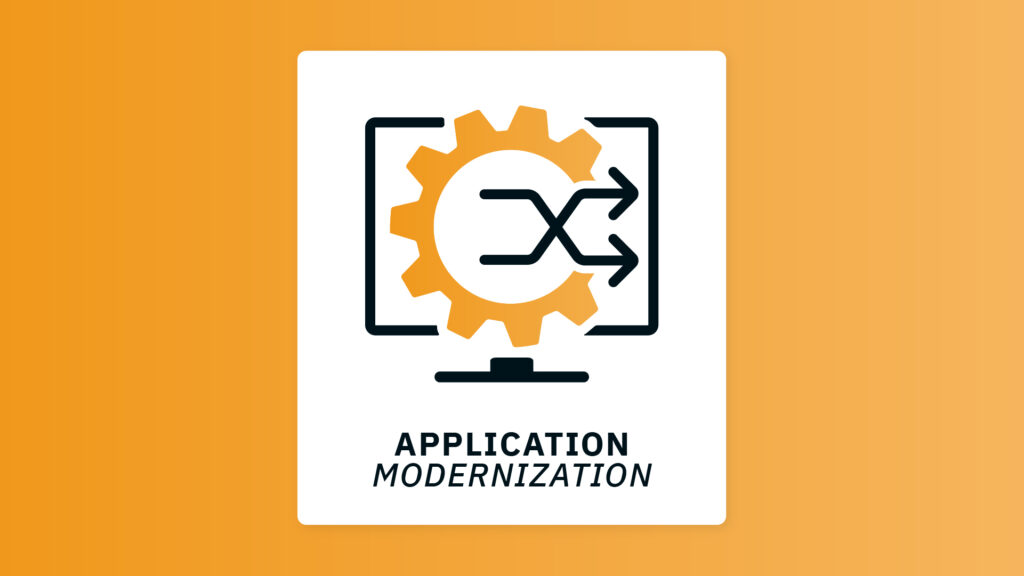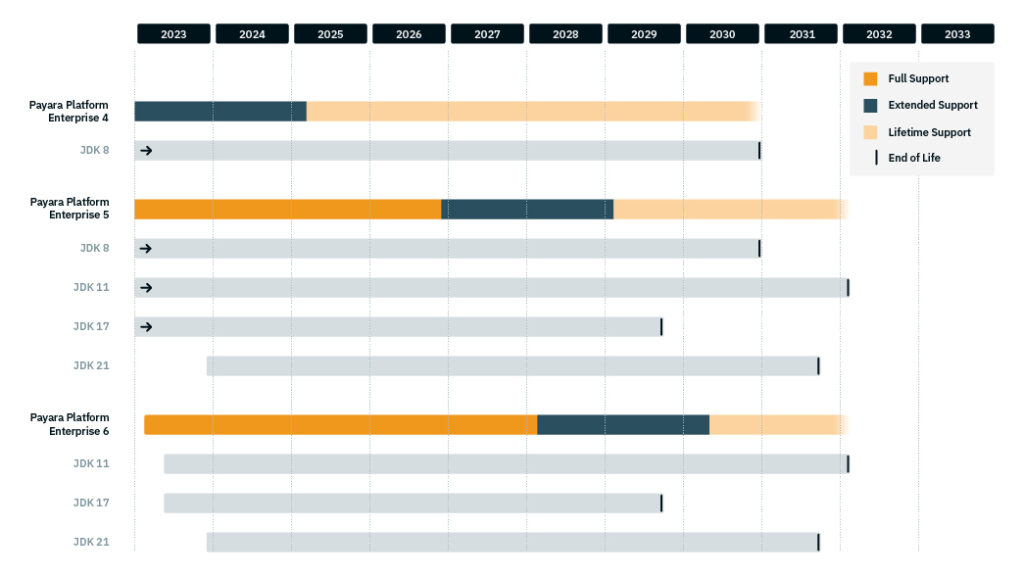 3 minutes
3 minutes
End-of-Life Technology: How to Drive Innovation Without Compromising Stability
When legacy systems approach end-of-life (EOL), enterprise IT teams typically face the choice of moving forward at all costs […]

Many enterprise Java application developers are facing the same challenge: handling the many legacy systems used by their organizations. Modernizing these is critical to improving scalability, performance and security. Yet, many teams are still supporting workloads based on Java SE 8 or earlier versions, despite newer versions and modern frameworks offering significant advantages. This aversity to refreshing such applications stems precisely from the importance these pieces of software have within an organization, as their disruption can considerably impact business operations.
This blog is your practical guide to successfully navigating that shift: from evaluating legacy codebases to leveraging cloud-native architectures, CI/CD pipelines and runtime tools to futureproof your enterprise Java applications while streamlining key modernization efforts.
Want to learn more about how to modernize your enterprise Java applications? Register to our webinar “Breaking Free from Legacy Java” now. Taking place on August 20th, it will discuss strategic modernization pathways and provide practical implementation guidance.
.jpg?width=1921&height=1081&name=Blog%20Images_Application%20Modernization%20(1).jpg)
Before looking at how to modernize legacy enterprise Java applications, let’s have a closer look at what application modernizations are and what they involve.
Application modernization is the process of updating and transforming legacy applications to align with current business needs and technological advancements.
Application modernizations are all about revitalizing outdated applications to align with current business needs, take advantage of the latest technologies and paradigms and minimize disruptions, without discarding what still works. In practical terms, it means taking older applications, i.e. legacy systems, and improving them in ways that make them:
Ultimately, application modernizations help you ensure your software keeps pace with innovation and meets growing expectations, while reducing the risk and cost of starting from zero.
It’s important to stress that under the umbrella of application modernizations strategies, specific projects can take many forms, such as replatforming, refactoring or rearchitecting. As such, the work required and end results can vary greatly.
Legacy applications often form the backbone of daily business operations but have become barriers to an organization’s growth, adaptability and/or innovation. They may still work (and they may be relatively new), but they typically suffer from:
Modernization addresses these issues while preserving the application’s core value. Thus, it can offer a strategic investment with wide-reaching benefits across the business. More precisely, by modernizing your legacy applications, you can:
Modernizing legacy enterprise Java applications promises big benefits, but it also comes with real challenges. According to a recent survey, 93% of IT leaders found their modernization experience was extremely or somewhat challenging. Understanding the main hurdles up front can help organizations plan smarter and reduce risk during transformation efforts. These typically include:
So how do you modernize intelligently and successfully? Let’s walk through proven strategies to modernize legacy enterprise Java applications, reduce technical debt and maximize long-term business value.
Before even thinking about touching a line of code or deploying a container, you need a clear understanding of your current state. A comprehensive assessment is the foundation of any successful modernization effort.
Begin by auditing your portfolio of applications and systems. Key areas to assess include:
Involve both technical teams and business stakeholders to get a full picture of an application’s usage, criticality and pain points.
After reviewing your application, it’s time to think about the resources needed vs. those available. Estimate potential returns such as:
Modernization isn’t free, so maximizing the investment is crucial. Assign priorities based on both business impact and modernization effort. Focus first on applications that are easier to modernize but whose upgrade can have high returns on investment (ROI). This strategy can help the team to successfully complete the project while enhancing their skills to modernize more challenging systems in the future.
Based on the results obtained from the two analyses above, you can identify the modernization strategy that is best suited to address your specific requirements, such as goals, resources and timelines. You may opt for anything between retaining/encapsulating your apps or replacing them. If you are unsure about the options available, download our free guide “A Business Guide to Legacy Application Modernization For The Cloud Era” for direction.
Once you’ve committed to modernizing your applications, the next big question is: what will you modernize with? It’s important to select the right solutions strategically. Don’t just reach for what’s new, but what fits your business, your systems and your people. The tools and platforms you choose will shape not only how smoothly the transformation goes, but how maintainable, scalable and future-ready your systems will be in the years to come.
For many organizations, the right technologies revolve around microservices, containers and cloud-nativeness. However, you should favor platforms that don’t force you into all-or-nothing decisions. For example, Payara Server Enterprise allows teams to support both modern Jakarta EE workloads and existing Java EE applications, side by side. Similarly, Payara Platform Enterprise support on-premise, cloud and hybrid deployments. Through these opportunities, you can make sure you are updating incrementally, preserving mission-critical systems while slowly evolving your applications.
The same careful selection applies to your delivery pipeline. As DevOps and GitOps become the norm, continuous integration and continuous deployment (CI/CD) practices can transform how you manage updates, such as automating testing, enforcing quality and speeding up releases. But here too, it’s about choosing tools that align with your workflows, integrate easily, and help you scale efficiently without adding complexity.
Security must be built in your migration plant, rather than bolted on. Legacy applications may have unknown vulnerabilities, hardcoded credentials or unpatched dependencies. A number of these can surface during modernization activities and new ones can be introduced if you’re not careful.
Incorporating security best practices throughout the modernization process can help overcome key challenges and enhance the robustness of your application. In particular, make sure you protect your applications during and after modernization through data encryption in transit and at rest, role-based access control (RBAC) as well as regular vulnerability scans and code audits.
Payara Services is a trusted partner for organizations seeking to modernize their legacy applications while maintaining their more modern workloads, streamline operations and future-proof their technology stacks. Through its robust middleware application platform, broad technology compatibility and responsive support, Payara has enabled organizations across multiple industries to overcome modernization challenges and achieve tangible business outcomes.
The SIFMA Foundation faced significant hurdles with an outdated, unsupported proprietary middleware that limited scalability and modernization. By migrating to Payara, the SIFMA Foundation was able to:
Insurtech leader CDL sought to re-engineer its flagship platform to deliver advanced capabilities and maintain a competitive edge. Migrating to Payara Server Enterprise enabled CDL to:
Leading credit card provider Rakuten Card partnered with Payara Services to modernize its IT infrastructure as part of a strategic shift to the cloud. Modernization has enabled Rakuten Card to:
These real-world cases underscore our commitment, expertise and key role in successful application modernizations that enable rapid user growth, operational scaling and the delivery of robust, resilient architectures for future-oriented applications.
Want to learn more and gain real-world, practical insights on how to succeed in your legacy application modernization projects? Join our Payarans online on August 20th for a live webinar on the topic. Save your spot here.
Share:
 3 minutes
3 minutes
When legacy systems approach end-of-life (EOL), enterprise IT teams typically face the choice of moving forward at all costs […]
 4 minutes
4 minutes
Keeping an application server running smoothly isn’t so much about new features, but more about predictability and consistency. Software […]
 5 minutes
5 minutes
At Devoxx Belgium 2025, I was able to talk about what happens after you build your container. In theory, […]